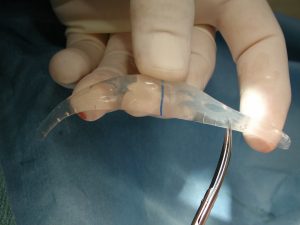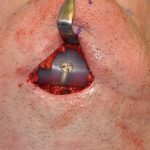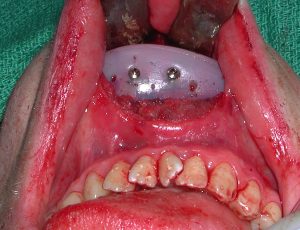Chin augmentation is a very effective procedure for those who suffer from microgenia or a weak chin. It is a procedure that is performed almost equally in both men and women. In males, it is more commonly done when they are younger usually under the age of 40.
It is also this male age group that is the most active from an athletic standpoint, Many of these sports activities can involve contact such as basketball, martial arts and boxing. Inadvertent blunt blows to the face of significant force are not uncommon. For those who have a chin implant, does participation in these sports play the chin implant at risk?
Several years ago, I saw a patient in my Indianapolis plastic surgery practice who suffered a chin implant ‘injury’. This was a college football player who had a chin augmentation procedure done when he was 16 years old. He was hit in the chin during a tackle and had immediate swelling. When the swelling subsided weeks later, he had obvious chin asymmetry. During surgical exploration, it was discovered that the silicone implant had shifted off midline as a result of the trauma.

This test, however, does not really replicate what would happen in human implantation. With the implant up against the bone, the impacting force is transmitted to the underlying bone. As a result, the implant does not absorb the entire force alone or without the support of an underlying framework. Therefore, implant fracture is highly unlikely unless the impacting force is of such a magnitude that the bone would fracture.


If a patient is concerned about their risk of chin implant problems from athletic participation, screw fixation is a simple prevention measure. They can be easily placed whether the implant is placed through an intraoral or a submental approach.
Dr. Barry Eppley
Indianapolis, Indiana


